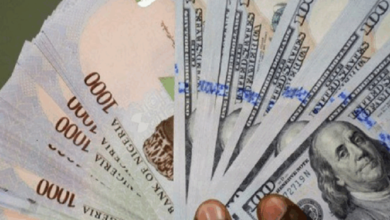Nigeria’s August 2025 Inflation Hits Five-Month Low: Implications for the CBN’s MPC Rate Decision
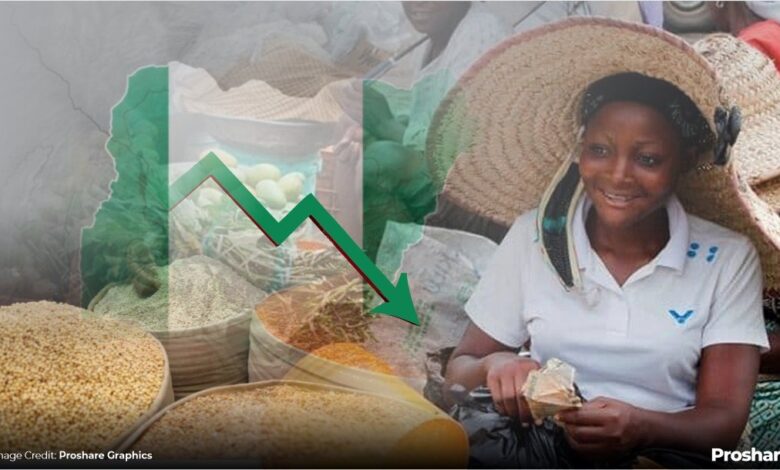
Nigeria’s Inflation rate fell year-on-year (Y-o-Y) to levels last seen in August 2022 (below 21%) as overall price levels sustained a fifth consecutive monthly drop.
- The Consumer Price Index came in at 20.12% (Y-o-Y) below expectations in August, suggesting increased levels of price stability in the Nigerian economy.
- The annual change in overall food price levels rose at a slower pace to reach 21.87% from 22.74% in July.
- Similarly, structural tailwinds gained momentum as core inflation dipped to 20.33% in August from 21.33% the previous month.
- Analysts note that the impact of the base year effect, sustained foreign exchange (FX), and activities of Dangote refinery, helping to lower petrol price, will remain the key driver of lower price conditions in the months ahead (see chart 1 below).
Chart 1:
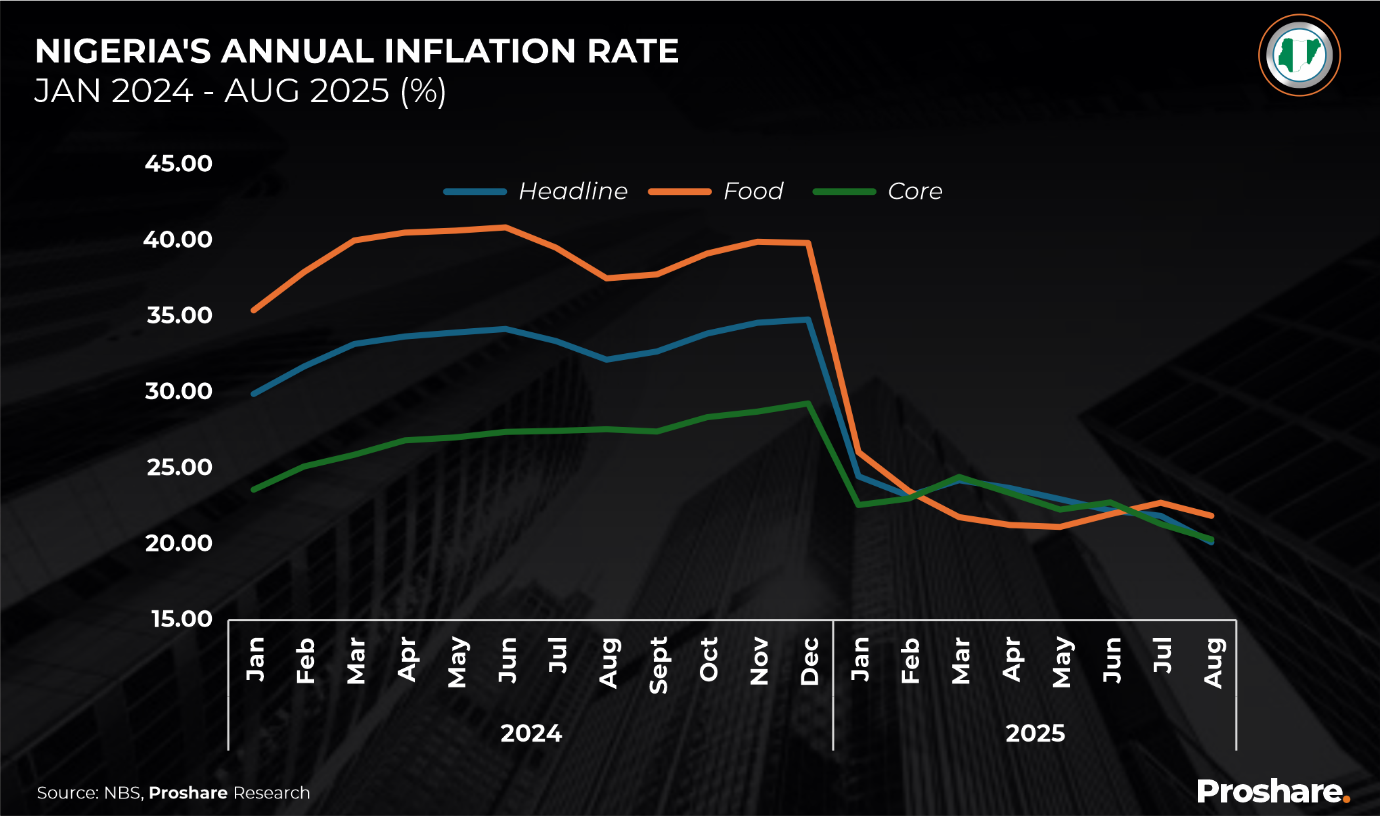
- Monthly changes in headline and food price levels fell to 0.74% and 1.65% in August 2025, respectively, from 1.99% and 3.12% the previous month; however, the monthly change in core inflation remains a key risk area.
- The easing was mainly driven by increased supply of farm produce as indicated by lower farm produce inflation, decline in housing and utilities inflation, and education service inflation.
- Conversely, health inflation (4.46%), transport inflation (2.17%), restaurant inflation (2.37%) and personal care inflation (3.10%) had the highest monthly increase in prices (see chart 2 below).
Chart 2:
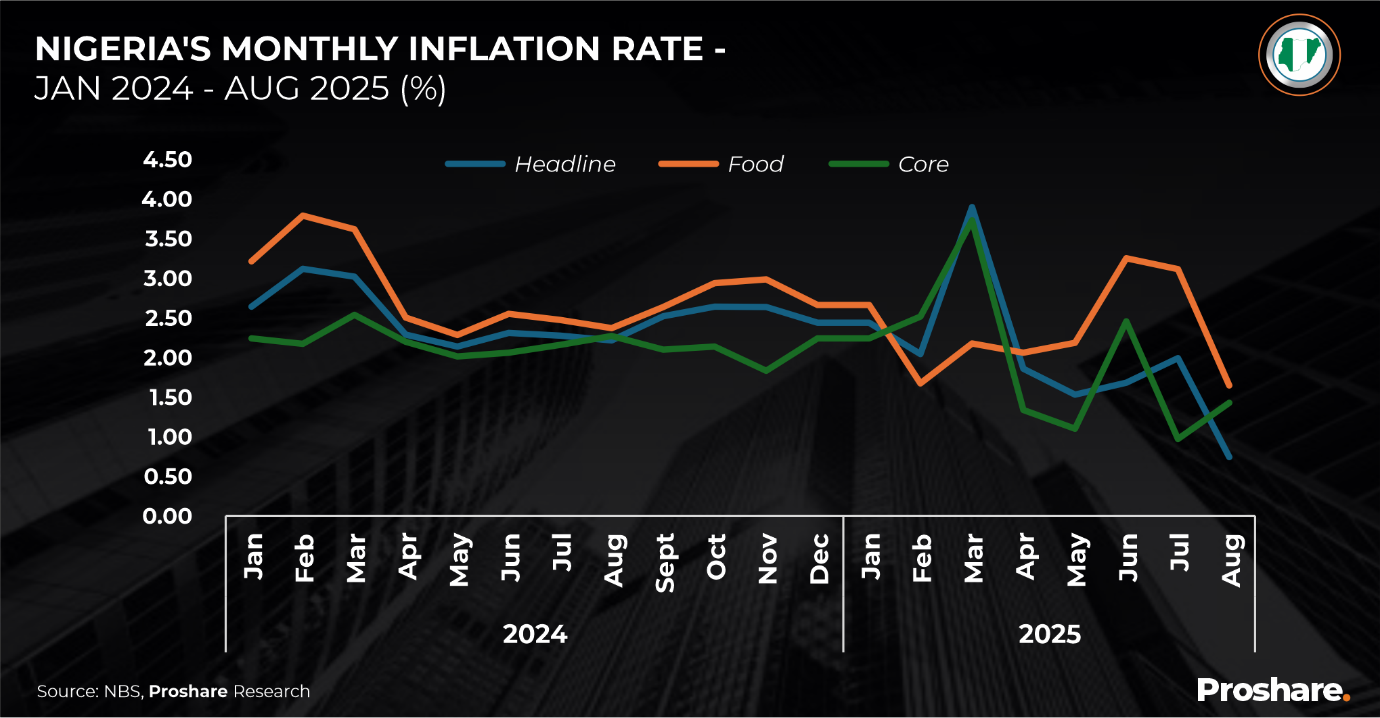
Nigerian Market and Economy Performance in August
Overall macroeconomic conditions remained stable in August 2025.
- Nigeria’s consumer price index moderated in August despite a higher effective US tariff rate on Nigeria, up from 14% in April to 15% which took effect on August 7, 2025.
- The US market is a destination for about 6% to 8% of Nigeria’s total exports; however, with the tariff exemptions on oil, we expect a marginal, negligible direct impact on trade conditions and domestic price disruptions.
- Private sector confidence remains strong, and FX market stability was sustained amidst the CBN’s move to take legal actions against FX forward contracts defaulters.
- In the fixed income market, sentiments remained mixed for government bills, with bearish sentiments dominating at the short end of the curve in August as expectations persist for lower inflation and a CBN rate cut.
- The equities market, on the other hand, was dominated by sell-offs as investors took profit amidst corporate disclosures revealing strong earnings
Inflation Across Regions and States in Nigeria
The NBS data revealed that the cost of living eased across all regions in August, except in the Northwest and Southwest. In the Northwest, overall price levels rose from 19.37% in July to 21.535% in August, while in the Southwest, the inflation rate rose marginally to 22.24% from 22.12% notably due to transport and health inflation costs.
Food price pressures moderated across all regions except the South-South, where food inflation rose to 24%. Despite these regional improvements, Nigerian farmers continue to warn of risks to food production due to the persistently high cost of agricultural inputs, which could undermine future supply-side stability (see Chart 2 below).
Chart 2:
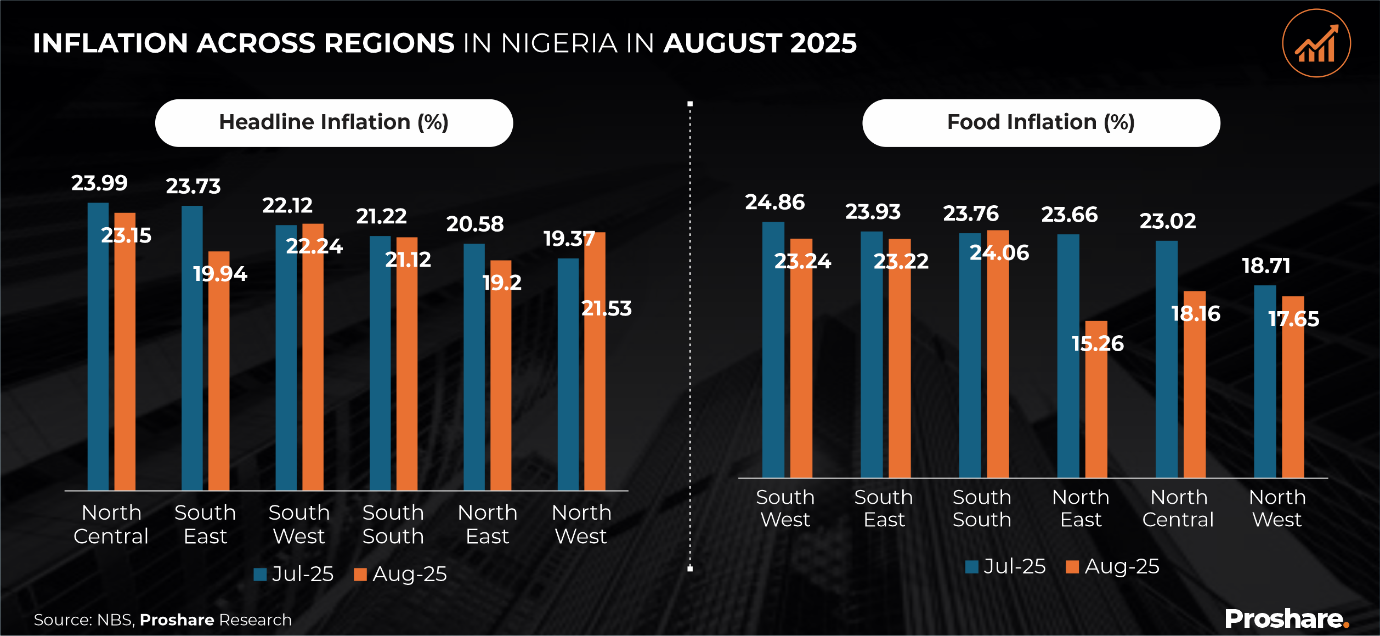
Borno State has consistently ranked among the states with the highest inflation rates for four consecutive months, in line with our projections. With the diminishing impact of the severe flooding experienced two months ago, we anticipate a marginal easing of food price pressures in the near term (see table 1 below).
Table 1:
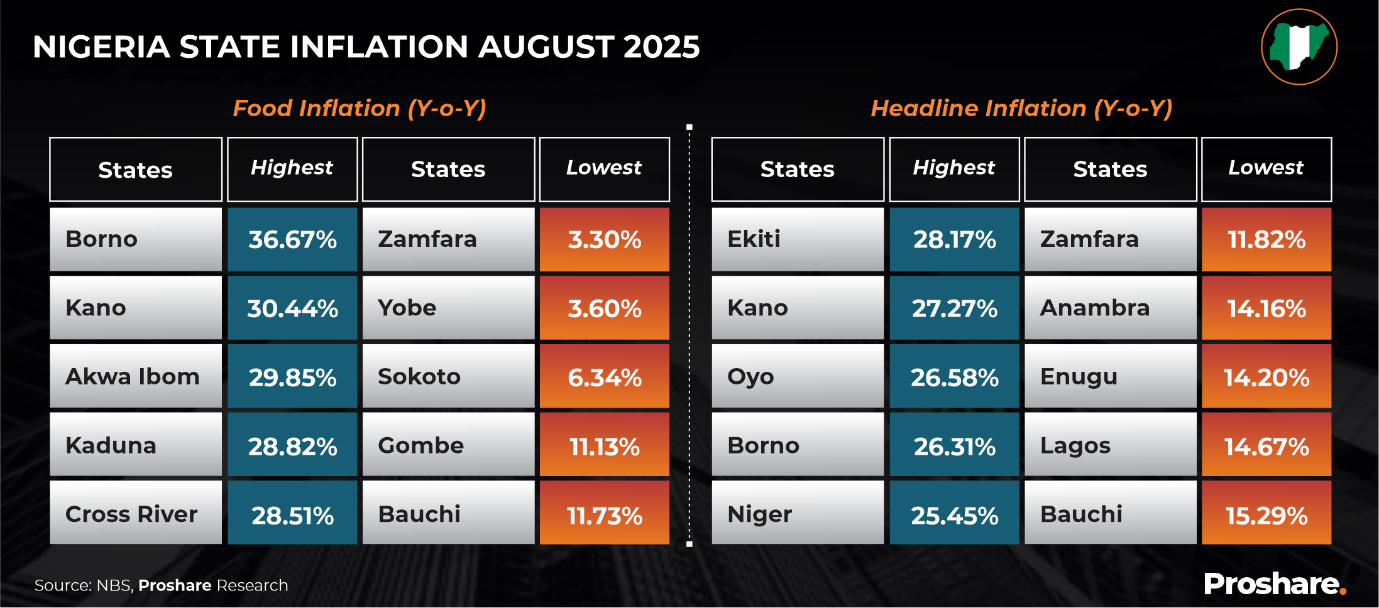
Closing Thoughts: Expectations for the Next MPC Meeting
With a five-month falling inflation rate, expectations have heightened for a rate cut by the Central Bank of Nigeria’s (CBN’s) Monetary Policy Committee (MPC) when it meets on Monday and Tuesday, September 21 and 22, 2025. Notably,
- Key indices, such as real rates, have been positive over the last five months.
- Real treasury rates have remained negative amid expectations for further inflation moderation and a CBN MPC rate cut.
- Inflation has dropped to levels last seen in August 2022.
- The FX market is stable while reserves have climbed above $41bn mark, buoyed by higher inflows.
- There is a need to reduce borrowing costs and support private sector activities to drive higher levels of growth.
- Importantly, there has been minimal pass-through from recent U.S. tariff actions and global market volatility to domestic prices.
These arguments support a possible rate cut of at least 25bps (see table 2 below).
Table 2:
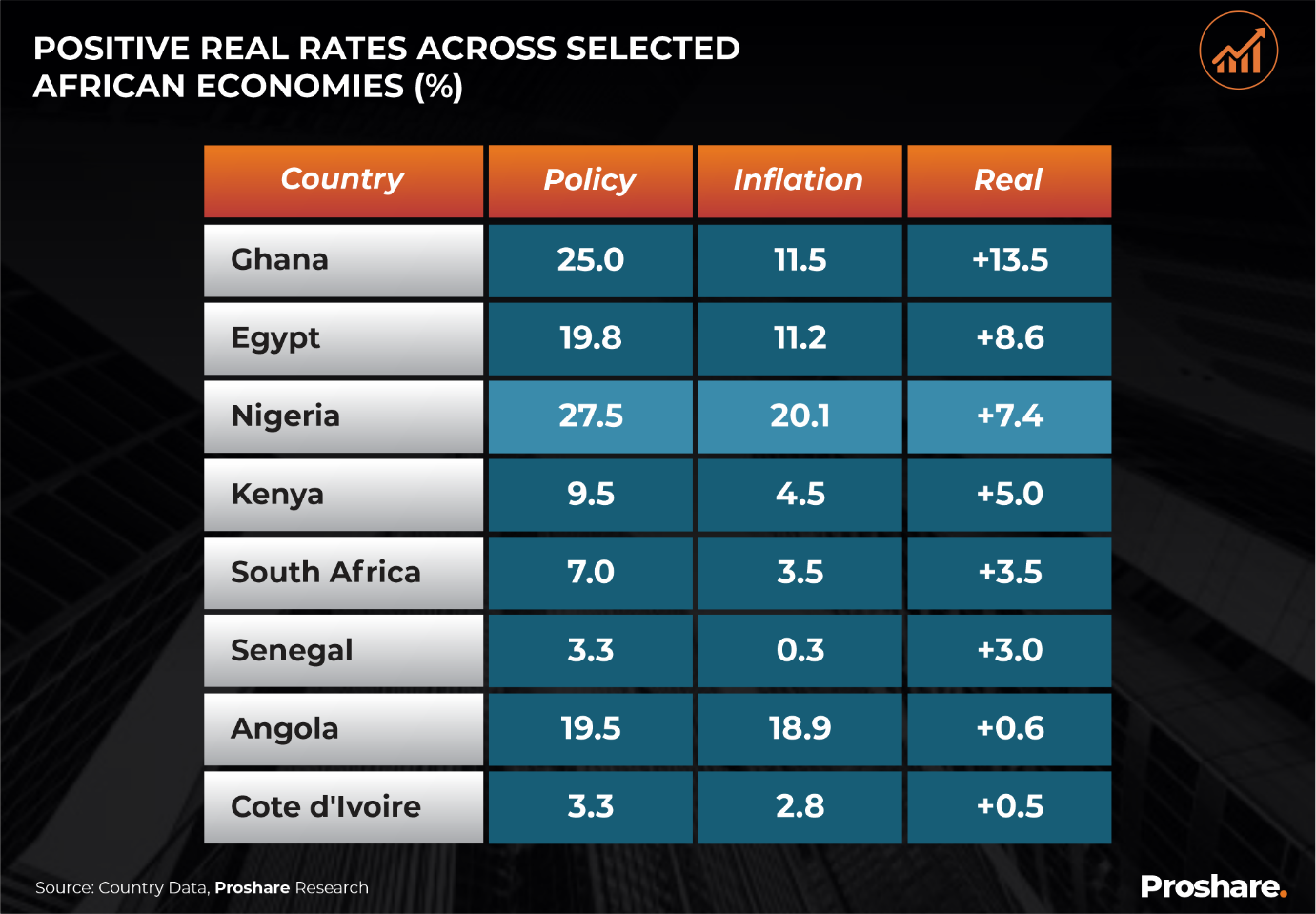
On the other hand, the CBN MPC may instead adopt a more cautious approach, driven by the need to:
- Consolidate stability in the FX market, which has been critical in supporting overall price stability and rebuilding external reserves.
- Additionally, structural and food price headwinds remain a concern, which goes beyond the scope of just monetary policy and requires coordinated fiscal responses.
- Assess the full impact of the base-year effect on inflation figures and monitor the evolving implications of U.S. tariff adjustments on both global and domestic markets.
Proshare analysts expect that the CBN would prioritise policy continuity, deferring rate adjustments due to the need to consolidate FX market stability.




